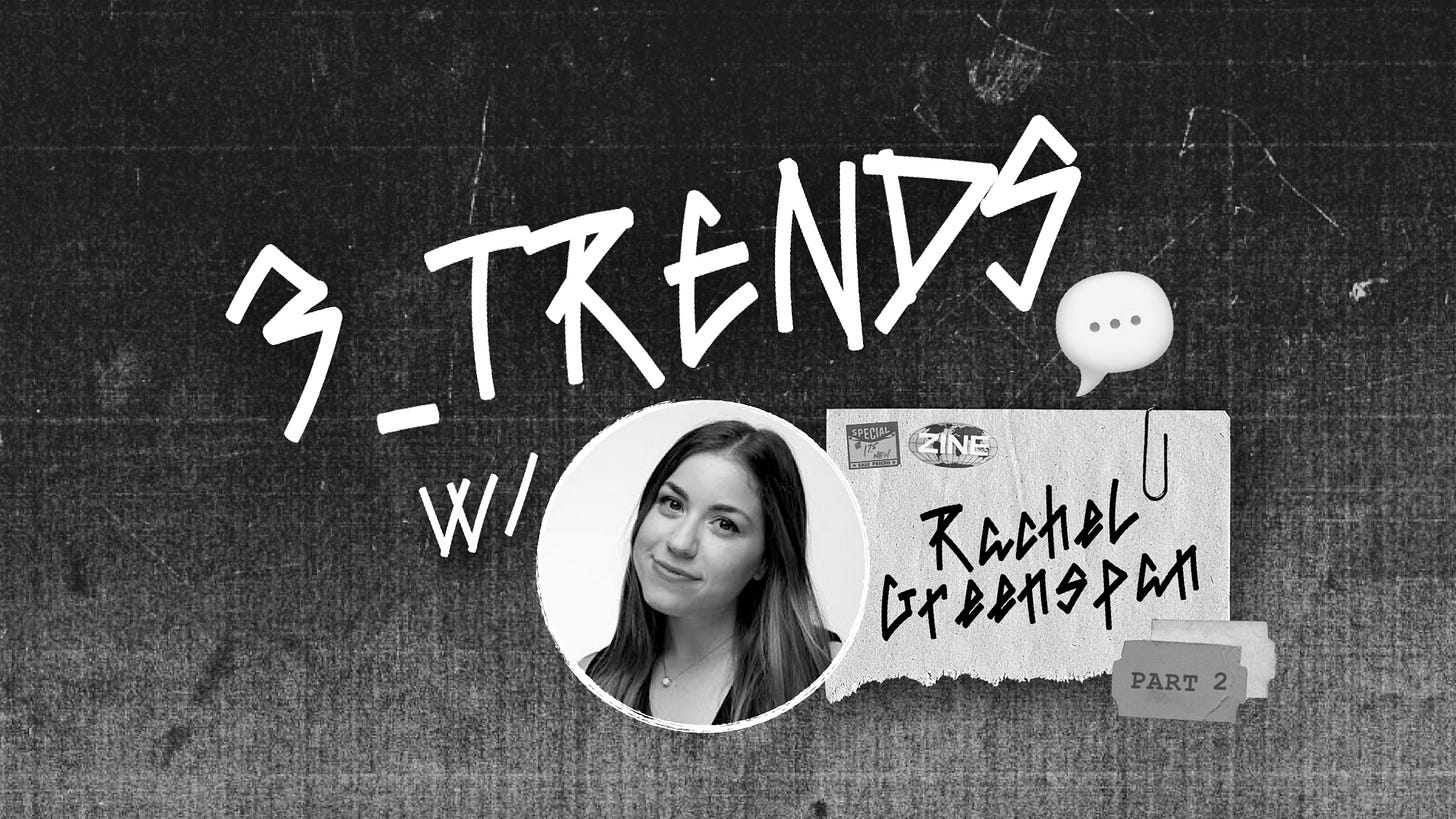3_TRENDS_Vol.16: Rachel Greenspan: Fake Authenticity, Meme Fatigue + Reply Guys
Vol.16
3_TRENDS is an interview series with the world's leading cultural researchers and thinkers, sharing their favorite overlooked trends.
Rachel’s first 3_TRENDS volume can be found here.
Rachel Greenspan (RG) is a social strategist at VMLY&R and previously a reporter and editor on Insider’s Digital Culture desk, where her coverage of QAnon won an award…


